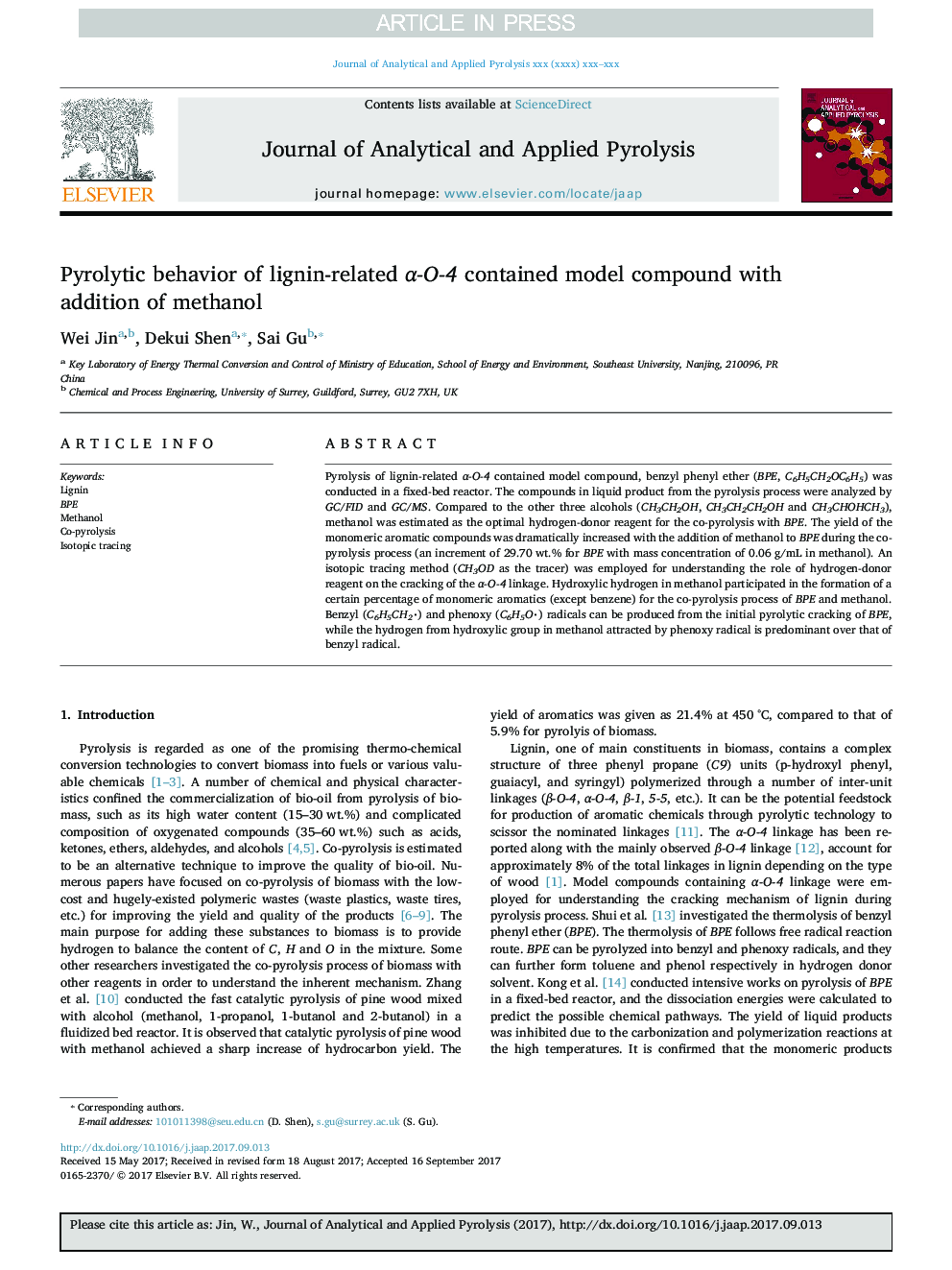| Article ID | Journal | Published Year | Pages | File Type |
|---|---|---|---|---|
| 7606545 | Journal of Analytical and Applied Pyrolysis | 2017 | 7 Pages |
Abstract
Pyrolysis of lignin-related α-O-4 contained model compound, benzyl phenyl ether (BPE, C6H5CH2OC6H5) was conducted in a fixed-bed reactor. The compounds in liquid product from the pyrolysis process were analyzed by GC/FID and GC/MS. Compared to the other three alcohols (CH3CH2OH, CH3CH2CH2OH and CH3CHOHCH3), methanol was estimated as the optimal hydrogen-donor reagent for the co-pyrolysis with BPE. The yield of the monomeric aromatic compounds was dramatically increased with the addition of methanol to BPE during the co-pyrolysis process (an increment of 29.70 wt.% for BPE with mass concentration of 0.06 g/mL in methanol). An isotopic tracing method (CH3OD as the tracer) was employed for understanding the role of hydrogen-donor reagent on the cracking of the α-O-4 linkage. Hydroxylic hydrogen in methanol participated in the formation of a certain percentage of monomeric aromatics (except benzene) for the co-pyrolysis process of BPE and methanol. Benzyl (C6H5CH2) and phenoxy (C6H5O) radicals can be produced from the initial pyrolytic cracking of BPE, while the hydrogen from hydroxylic group in methanol attracted by phenoxy radical is predominant over that of benzyl radical.
Related Topics
Physical Sciences and Engineering
Chemistry
Analytical Chemistry
Authors
Wei Jin, Dekui Shen, Sai Gu,
